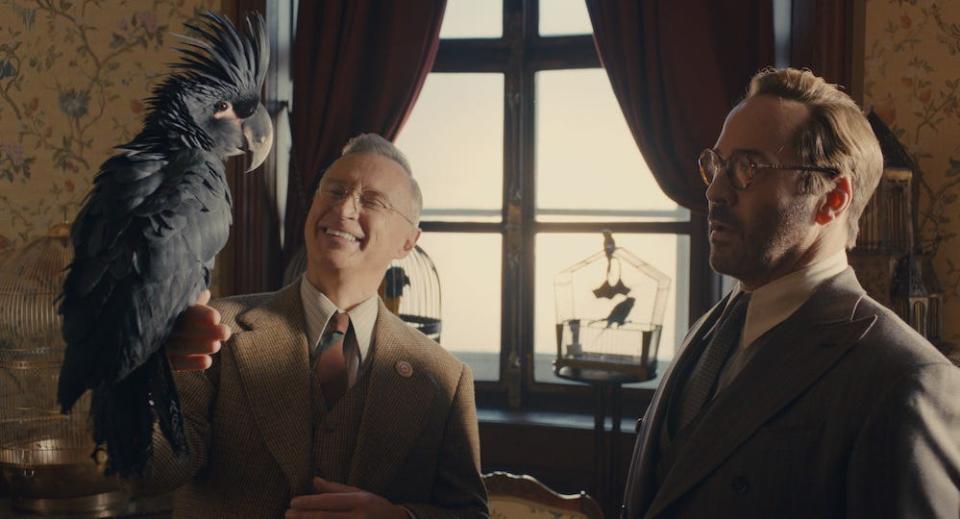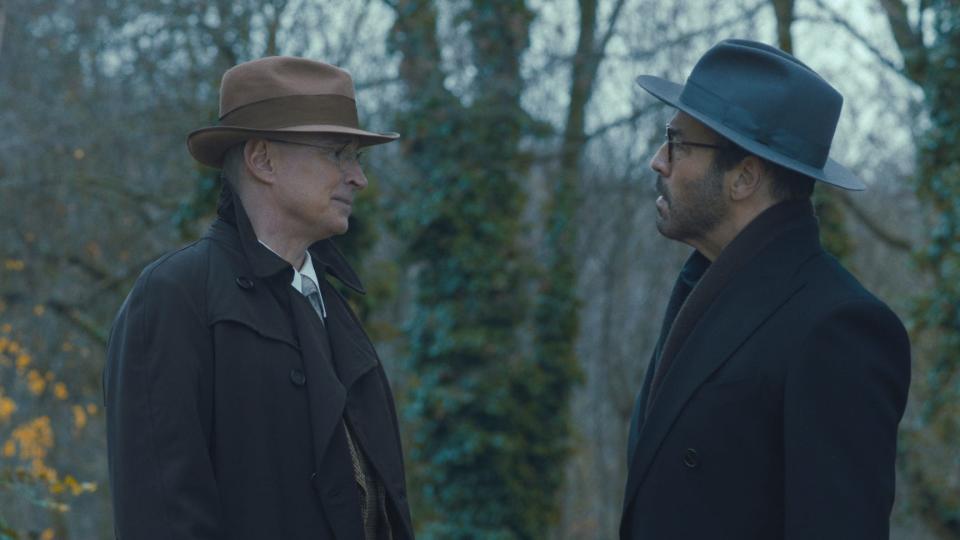'The Performance' was a long time coming for sibling filmmakers Shira, Jeremy Piven
American Jewish tap dancer Harold May (Jeremy Piven) can't catch his big break America, so he and his troupe travel to Europe in 1937 for a multi-country tour. While there, he meets a German attaché (Robert Carlyle) who promises the dancers an incredible one-night-only engagement in front of an important crowd in Berlin.
The dancers accept the man's offer, but when they see Nazi banners and Chancellor Adolf Hitler in the front row, there's panic. Do they move ahead with the performance, very well knowing the dangers that they could face, or do they flee?
That internal struggle was one of the many reasons that drew siblings Shira and Jeremy Piven to make "The Performance," based on Arthur Miller's short story of the same name. It's also a piece that their mother gravitated toward years ago.
"My mother had given me the short story, and my mother is the type of person where she's not frivolous. If she hands me something, it means something to her," Jeremy said in a recent interview. "I read it immediately, and I was blown away by it."
Shira Piven and Joshua Salzberg wrote the screenplay, and she said it was a story that was just waiting to be told.

"I've always loved Arthur Miller and ... there was something about his short stories that are a little different. They’re dark little sketches," Shira said. "There’s something about the premise of this story that the minute I would tell it to someone, right away their eyes would light up. I kept feeling like this is a movie."
It was a 12-year journey to get the film made, and moviegoers will soon be able to catch screenings at the Palm Springs International Film Festival on Jan. 7, 12 and 14.
One tap at a time
Well before the film started production, Jeremy began learning tap dance. He joked that the more noes the production received in their quest to find funding, the better he got at tap.
Overall, it took about a decade of practice, or "years of pure humiliation," as he put it, although one wouldn't know it when admiring his fast feet in the film. The secret to learning the artform was his lifelong passion for the drums.
"No matter what, when we're doing these tap numbers, I can stick the landing because I know rhythmically where we're going," Jeremy said. "If I miss a few beats, I'm always going to stick the landing, and so that at least gave me the confidence to attempt it."

"The Performance" also stars Maimie McCoy, Adam Garcia and Isaac Gryn, who got to show off their moves as well. Their humble costar praised their talents.
"Choreography and tap dancing is in their bones. My 10 years pales in comparison to Adam Garcia, who probably has been doing it for 40 years," Jeremy said. "And yet, as good as Adam is, he's still in awe, as they all are, of our choreographer Jared Grimes, who is kind of the Michael Jordan of tap dancing."
Grimes has a quick appearance at the end of the film as a street dancer.
Jeremy was so immersed in Harold and his pain that he forgot about his own safety at times. One day, as he was shooting the scene where he's performing in front of Nazis, he fell on hardwood floor, with his fist against his ribs, and broke eight of them. It was "all very surreal," he said, and joked that the behind-the-scene footage of the film could be used for another film. Shira added that was the one moment where she looked at Jeremy and said, "Oh, my God, that's my brother," during production of the film.
Aside from the physical demands of the performance, the COVID-19 pandemic put quite a strain on the production, from managing border closures in Europe to finding tap dancers for dance numbers. Despite some setbacks, the show went on.
"I've been around forever, I've done over 80 movies, and I am absolutely the most proud of this film," Jeremy said. "There's a reason why the result is what you see. It wasn't easy, but nothing worth it is ever easy."

A tough decision
As the dancers makes their way around Europe, it seems like the answer to their prayers lies in Mr. Fugler's (Robert Carlyle) hands. This charming, albeit strange, man is over the moon about their dancing skills, and he promises them an audience that'll be as equally captivated.
Harold can hardly hold back his excitement, but his fellow dancers are more hesitant. Benny (Garcia) reminds him that Jews are leaving the country, not trying to stay, during the late-1930s. Harold himself knows the risks associated with being Jewish in Germany during that time ? his family changed their last name from Markowitz to May, and his family left Europe to seek safety and refuge. But yet, when he's faced with whether to perform or flee, he doesn't know what to do.
Many may think it would be an easy decision to make, but Jeremy and Shira make a convincing case as to why it's a harder task than it may seem.
"I really identified with Harold May and his journey and why he did what he did. Once I was there, you don't think about the reality that Hitler is coming into power, I'm Jewish, Benny is making it very clear that they don't want people like me. I am so singularly focused on progressing and becoming successful in this artform that I've dedicated my life to, so it was very easy to fully commit to this character," Jeremy said. "That's one of the great things that we noticed when we would read it, people were genuinely torn, so I felt like we did our job."

Shira added that she also identified with Harold, and that his story reminded her of her father's. Her father, the child of immigrants, wanted to be an artist, but never received approval from his father. Similarly, Harold's parents did not approve of his decision to want to dance and go off to Europe, as is seen in the film.
"Harold just wants a little taste of recognition and success, and he's absolutely willing to risk everything," Shira said. "I think the stakes being that high make the movie work."
The story also comes at a time when anti-Semitic and anti-Muslim hate incidents have risen in the United States since the start of the Israel-Hamas war in October. Shira said the film "speaks to what we're going through," but it's also a universal story that anyone can connect to in some way.
Jeremy added: "There isn't anyone, I don't think, that won't see and be immersed in the story and be lost in this character's conundrum. How much of yourself will you give away to be successful in this life?"
How to watch
What: "The Performance" screening at the Palm Springs International Film Festival
When and where: 8 p.m. Jan. 7 at the Annenberg Theater; 1:30 p.m. Jan. 12 at Regal Cinemas Palm Springs; 11 a.m. Jan. 14 at the Palm Springs Cultural Center
Cost: $15
More info: https://psfilmfest.org/film-festival-2024/film-finder/the-performance
Ema Sasic covers entertainment and health in the Coachella Valley. Reach her at [email protected] or on Twitter @ema_sasic.
This article originally appeared on Palm Springs Desert Sun: Shira, Jeremy Piven talk 'The Performance' at Palm Springs film fest
